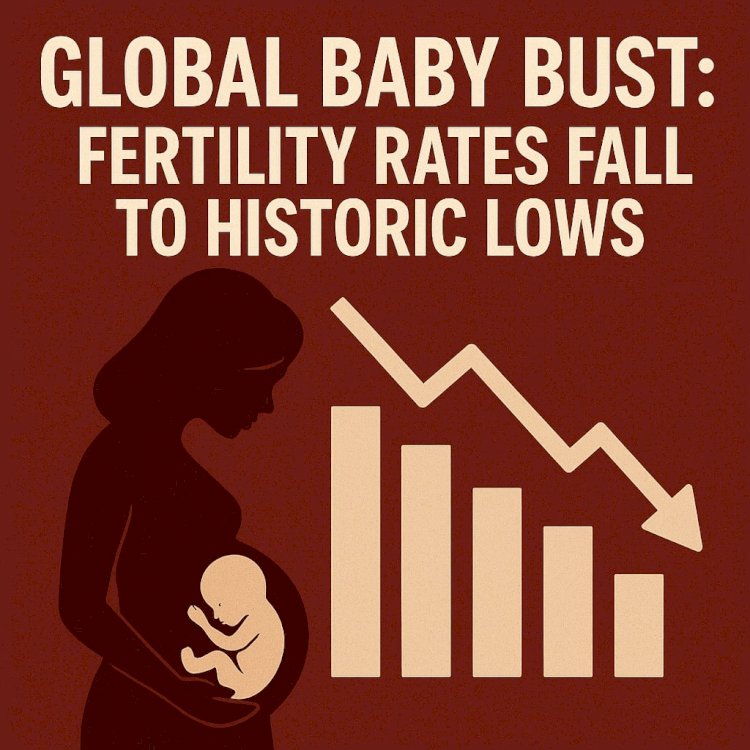Global Baby Bust: Fertility Rates Fall to Historic Lows

June 11, 2025
The world is facing a demographic crisis as birth rates continue to plummet across the globe. According to the United Nations, the global fertility rate has dropped to 2.1 births per woman, the replacement level necessary to maintain a stable population. This marks a significant decline from approximately 5 in the 1960s and 3.3 in 1990.
A Global Trend
Nearly two-thirds of the world's population now resides in countries with fertility rates below the replacement level. In regions like Europe and East Asia, the situation is particularly dire. South Korea's fertility rate stands at a record low of 0.75, while Japan's rate has fallen to 1.15. China’s fertility rate is also below replacement level, and the country is experiencing a significant demographic shift.
Economic Pressures and Lifestyle Choices
Experts attribute the declining birth rates to a combination of economic pressures and changing societal norms. High living costs, job insecurity, and limited access to affordable childcare are significant deterrents for potential parents. Additionally, many individuals, particularly millennials and Gen Z, are prioritizing career advancement and personal freedom over starting families. This shift in priorities is contributing to the global "relationship recession," where fewer people are entering into long-term partnerships.
Government Responses
In response to declining birth rates, several governments have implemented pronatalist policies such as financial incentives and extended parental leave. However, these measures have had limited success. Critics argue that such policies often fail to address the underlying issues, such as gender inequality and lack of work-life balance, that discourage people from having children. Some experts suggest that embracing immigration and supporting gender equality may be more effective strategies to counteract the demographic decline.
Looking Ahead
The implications of declining birth rates are far-reaching. A shrinking and aging population can lead to labor shortages, increased healthcare costs, and economic stagnation. As the global population continues to age, countries will need to adapt their policies and economies to ensure sustainable growth and stability. Addressing the root causes of declining fertility rates, rather than merely implementing surface-level incentives, will be crucial in navigating this demographic challenge.
The global decline in birth rates is a complex issue influenced by economic, social, and cultural factors. While governments are taking steps to address the issue, a more comprehensive approach that includes economic reforms, gender equality, and immigration policies may be necessary to reverse the trend and secure a stable demographic future.

 content-team
content-team 


















